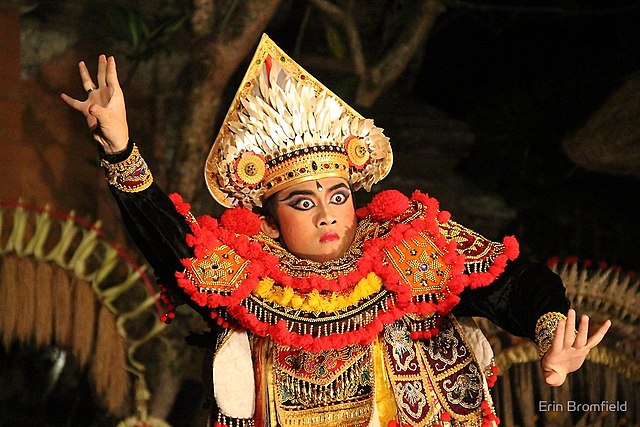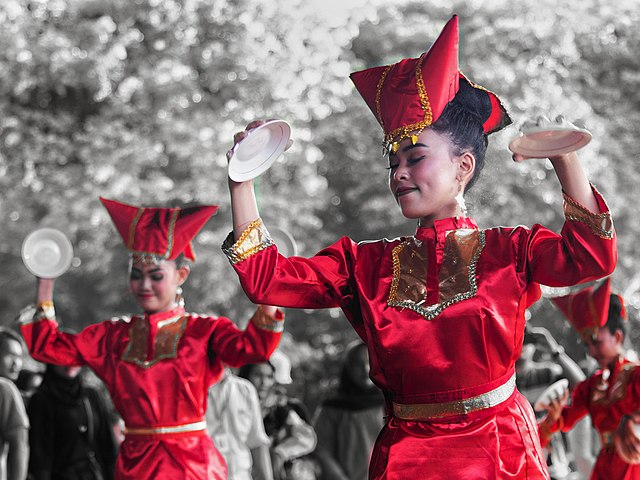Most Well-Known Indonesian Traditional Dances — The cultural richness of Indonesia, especially the traditional dances that are often at the forefront, is quite well known. These dances are typically performed at ceremonies to welcome guests, mark significant days or events, or perform religious rituals. There are more than 300 different traditional dances in Indonesia. We’ve compiled ten of the most well-known Indonesian traditional dances here:
Reog Ponorogo
Reog is one of the art forms that have its roots in East Java, and Ponorogo is regarded as the actual city where Reog started. Warok and Gemblak, two figures who were there when the Reog dance was performed, are shown at the Ponorogo city gate. One of the Indonesian regional traditions that are still heavily infused with mysticism is Reog Dance. Reog has emerged as one of the most well-liked Indonesian dances and is also quite entertaining for visitors.
Kecak – Balinese Traditional Dance
Kecak, Ketjak, or Ketjack is Balinese dance performed in Bali and was developed in the 1930s and is primarily performed by men. The Kecak dance performance is done by many (dozens or more) men dancers sit in a circle and do this dance while shouting “cak” while simultaneously raising both of their arms. Kecak, however, is believed to have originated from Sanghyang rite. As part of the ceremony, the dancer will be unconscious while conversing with God or the spirits of the ancestors and expressing their desires to the general audience.

Pendet – Dance of Indonesia
Pendet dance was once a Hindu worship dance that was primarily performed at Bali’s Temple. The uniqueness of this dance serves as a metaphor for the introduction of God’s offspring to the natural world. I Wayan Rindi – a master of dance is the creator of this dance. He is well-known for creating the sacred Pendet dances that are performed in temples on every religious occasion. Nowadays, Pendet was gradually transformed into a “welcome dance”, despite the fact that it still contained some spiritual and religious aspects.
Saman Dance Aceh – Most Authentic Indonesian
In 2011, UNESCO named this local saman dance from Aceh to the “Representative List of the Intangible Cultural Heritage of Humanity.” The Gayo Tribe is the source of the Saman Dance and this dance is performed to mark significant occasions for the indigenous people of Aceh, such as the Prophet Muhammad’s birth. A group of dancers with an odd number performs the Saman dance and the music produced by the dancers’ hand movements is what makes this dance special.
Serimpi
Serimpi dance is traditional from Yogyakarta Palace performed by several elegant female dancers. The politeness and gentleness of the palace culture are demonstrated through slow, soft motions. This dance is first described as magical and is exclusively performed at the Yogyakarta Palace for official occasions and to honor the Sultan’s throne.

Piring Dance
This dance is well known as the “Piring” (Plate) Dance. Men and women used to perform the Piring Dance, which has its roots in Minangkabau, West Sumatra, to send offerings to God as a sign of thanks for the bountiful harvest. When the talempong and saloang instruments sound, the dancers begins the dance moves. One of the unique things about this dance is no matter how tough the dance steps are, the dancers’ quick movements while holding plates in their hands prevent them from falling.
Kuda Lumping
As a traditional Javanese dance from Ponorogo, East Java, Indonesia, Kuda Lumping (Javanese: Jaran Kepang or Jathilan; Indonesian: Kuda Lumping or Kuda Kepang (Flat Horse) represents a bunch of horse riders. The dancers “ride” bamboo horses that have been weaved and adorned with vibrant paint and fabric. The dance typically depicts soldiers riding horses, but some Kuda Lumping performances also feature trances and magic illusions. When the “possessed” dancer is in a trance and performing the dance, he may exhibit extraordinary skills like swallowing broken glass and resisting the effects of whipping or burning coals.
There are several dances that you need to know from Indonesia. You can see that some Indonesian dances still contain magical elements. Though this is still a must-watch thing in Indonesia, so make sure to take a look at them.


































